We will explore the expressive potential of the "Cabinet of Curiosity," or "Wunderkammer" in making our own "cabinet," inspired by visits to mysterious and wondrous sites in Central Italy.
In creating our own cabinet of curiosities, we will explore the way that this enigmatic format conjures an evocative sense of place, through the inspiration of visits to remarkable places in Central Italy. We will see enormous stone monsters from the 16th c., mummies, marble serpents devouring the souls of the damned, huge mosaic and glass sculptures - all the while collecting fragments of these experiences in order to make our own "memory - theatre"
Places of Wonder:
Italy is steeped in history and legends. Myth and religion animate the land with endless places of wonder. Mountaintops host mysterious castles, bridges recall lost loves and battles won, and woodedglades conceal ancient temples. Across the Italian landscape, churches and shrines honor many saints and miracles, and monuments celebrate the beautiful as well as the grotesque. Mannerist gardens with grottos and statuary still evoke a liminal place between reality and dreams.Throughout time, travelers have visited Italy to enrich their faith, seek inspiration, and marvel at the wealth of wonders created by a people of limitless curiosity.

Cabinets of Wonder

Marco Polo returned from China and India with exotic tales and objects. Amerigo Vespucci described strange and marvelous creatures across the seas. Leonardo dissected thehuman body and marveled at its complexity. Galileo pondered the heavens with telescopes and other instruments. Travelers, explorers, artists, and scientists fostered new knowledge that overwhelmed. To understand an ever-expanding world, Italy established the first European museums. These earliest museums began with collectors acquiring oddities – natural and man-made – to be displayed in cabinets later known as Wunder Kammer. Emerging in the 16th c., these "wonder-rooms" or "wonder cabinets,' were filled with preserved animals, coral, tusks, skeletons, minerals, as well as exotic, man-made objects - "a wide variety of objects and artifacts, with a particular leaning towards the rare, eclectic and esoteric." They "were regarded as a microcosm or theatre of the world - and a memory theatre."
Our Workshop
During the week, we will be inspired by visits to the Sacro Bosco also known as the Park of the Monsters in Bomarzo, Etruscan tombs, the Teatrum Mundi, the Tarot Garden and more. We will also hunt for modestly -priced treasures at local shops and antique markets. At the studio in Monte Castello, participants will be encouraged to create their own Wunder Kammer by making a small shrine, box, or cabinet to contain venerated objects or display a personal collection of curiosities accumulated on our adventures or brought from home..
 Throughout the workshop, participants will be housed in the remarkably well-preserved Umbrian hill town of Monte Castello di Vibio. Your workshop package is all-inclusive, providing welcome and departure services and airport transfer from the Rome Fiumicino, Leonardo Da Vinci Airport (FCO). Aboard our comfortable private bus, single occupancy accommodations with shared bath (a wide range of upgrades with private bath are available), 3 meals per day Monday-Thursday, Prosecco brunch and dinner on Saturday and Sunday (no meals are served on Friday, our excursion day. Your workshop includes one excursion per week and many additional options are available on weekends for an additional fee. Of course, 24/7 access to facilities and 24/7 bi-lingual support are provided.
Throughout the workshop, participants will be housed in the remarkably well-preserved Umbrian hill town of Monte Castello di Vibio. Your workshop package is all-inclusive, providing welcome and departure services and airport transfer from the Rome Fiumicino, Leonardo Da Vinci Airport (FCO). Aboard our comfortable private bus, single occupancy accommodations with shared bath (a wide range of upgrades with private bath are available), 3 meals per day Monday-Thursday, Prosecco brunch and dinner on Saturday and Sunday (no meals are served on Friday, our excursion day. Your workshop includes one excursion per week and many additional options are available on weekends for an additional fee. Of course, 24/7 access to facilities and 24/7 bi-lingual support are provided.
.
The study of human anatomy in Italy is a long and distinguished tradition. The extraordinary anatomical theatres in medical schools at the University of Padua and the University of Bologna bear witness to this history and were among the first of their kind in existence. Even today, we marvel at the accuracy and lifelike intensity of the 17 th c. wax anatomical models in the Specola Museum in Florence, which were made to allow medical students to observe venous, muscular, and skeletal systems without a cadaver. In this regard, the study of anatomy in Italy has profoundly impacted not only our understanding of the human body, but also the study of medicine in the western world.
Surprisingly, this history also reveals much about the significance of the role of visual art in furthering science and medicine. In his brilliant series of lectures at the Art Students League in New York, artist, anatomist, and scholar, Robert Beverly Hale once said: “science had actually sprung from art, that it had developed in those great periods when artists had looked at nature very closely and carefully, and had tried to record exactly what they saw. That, what we explained, was what scientists have been doing ever since.”
To support Hale’s observation one need look no further than Leonardo’s anatomical studies. These drawings are incredible not only for their accuracy and beauty as works of art, but also as a highly accurate analysis of function, of what anatomist George Bridgeman referred to as “the human machine.” Leonardo is perhaps unequalled in his analysis of the form of the human body as a manifestation of the interrelationship of functioning systems. It is known, for example that Leonardo once injected the heart of an ox with hot wax, then made a glass model of the casting. He then pumped the model with water to analyze the circulation of fluids in the human heart. Incredibly, Leonardo’s conclusions were not fully corroborated by cardiologists until the 1980’s.
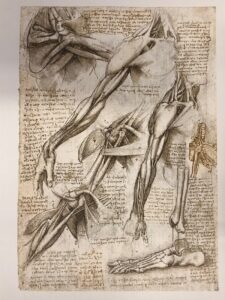 The objective of our Human Anatomy intensive is to follow in this tradition. Thus, we will not only identify anatomical structures of the human body, but we will also analyze the function of those structures and their effect on its outward form. Throughout the workshop, we will reference functional systems in understanding their manifestation in surface anatomy of the figure.
The objective of our Human Anatomy intensive is to follow in this tradition. Thus, we will not only identify anatomical structures of the human body, but we will also analyze the function of those structures and their effect on its outward form. Throughout the workshop, we will reference functional systems in understanding their manifestation in surface anatomy of the figure.
Our focus will be on the skeletal and muscular systems, with some analysis of the major arteries of the venous system. We will work from a variety of sources, including real human skeletons as well as drawing from our collection of anatomical models and plaster casts. Our medium in the course will be various drawing media in large-format sketchbooks as a means of note taking for the course.
Our approach will be in the form of lectures and hands on drawing focusing first on the skeletal system. We will draw from real human skeletons as well as anatomical models. We will explore one area of the body at a time, first in analyzing the skeletal structure of the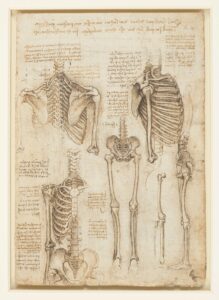 torso. Afterward, we will move on to the head, arms, and legs, as well as hands, and feet. Participants will produce life-sized drawings with charcoal on heavy paper as well as drawings in sketchbooks of details such as joint articulations.
torso. Afterward, we will move on to the head, arms, and legs, as well as hands, and feet. Participants will produce life-sized drawings with charcoal on heavy paper as well as drawings in sketchbooks of details such as joint articulations.
Afterward, the course will focus on the muscular system first through lecture and note-taking then by drawing from anatomical models, plaster casts, and the live model, in the same order. However, we will in exploring the muscular system we will utilize tracing paper and colored pencil, in order to add layers of muscles over our previous skeletal drawings.
In addition to the intensive schedule of daily drawing and lecture, we will make an excursion to the famed Specola Museum in Florence where we will draw from their collection of 16 th to 18th c. wax anatomical sculptures. The incredibly lifelike flayed figures are shockingly lifelike - at once factual and at the same time, powerfully expressive. Here, the wax models will provide an overview of the skeletal and muscular systems as well as an introduction to the venous system.
Throughout the workshop, participants will be housed in the remarkably well-preserved Umbrian hill town of Monte Castello di Vibio. Your workshop package is all-inclusive, providing welcome and departure services and airport transfer from the Rome Fiumicino, Leonardo Da Vinci Airport (FCO). Aboard our comfortable private bus, single occupancy accommodations with shared bath (a wide range of upgrades with private bath are available), 3 meals per day Monday-Thursday, Prosecco brunch and dinner on Saturday and Sunday (no meals are served on Friday, our excursion day. Your workshop includes one excursion per week and many additional options are available on weekends for an additional fee. Of course, 24/7 access to facilities and 24/7 bi-lingual support are provided.
Italy is synonymous in many minds with olive oil and it has traditionally produced some of the finest in the world! Here, in Umbria - the region called the Green Heart of Italy - a land of olive trees, grape vines, wheat fields, and rich in ancient traditions - we are very fortunate to produce some of the finest oils in Italy. Our little village is surrounded by olive orchards in every direction and their yield has claimed numerous regional and national awards. This Green-Gold as it is sometimes called, is the pride of our region and our locality. Those who have never experienced the flavor of freshly-pressed Umbrian pure virgin olive oil will be amazed by the complex flavor: smelling of the green of freshly cut grass, then rich and buttery, and finally - a spicy finish - it is among the most complex oils in the world!
From our mountain castle village, we are fortunate to be within a mornings walk of Passo del Palomba, a farm estate owned by Alessandro Gilotti and his wife, Claudia. Sandro is an internationally renowned expert on olive oil, and owner of one of the most highly-regarded producers in the region. The couples passion for this land as well as for the oil and wine they produce, is infectious and participants will soon be won over by their enthusiasm for the health benefits of his oil and his vast knowledge of cultivation and production.
The course is designed for all levels of interest, those with a general interest in simply learning more about quality olive oil in spectacularly beautiful setting will be equally enriched by the workshop as those with careers in the culinary arts, seeking to enhance their expertise and credentials. The week-long workshop, will consist of four, three-hour classes, held on the farm of the Passo del Palomba estate from Monday to Thursday. Day-five will be held at our Asilo facility, where we will do a tasting paired with dinner, accompanied by local wines of note. Afternoons will be spent in Monte Castello with excursions to local wineries, food and wine tastings, and a truffle hunt.
Topics to be addressed in our time at Passo della Palomba:
During your stay, you will be housed at a beautiful and grand, 17th c. villa, located on a forested mountain overlooking Tiber valley.
Surrounded on all-sides by olive groves, carefully kept lawns and grand cypress trees, hedges of lavender and rosemary grace the landscape, with a vegetable garden for guest use - the setting is idyllic. The stately villa itself is completely gated and fenced and features unique architectural elements, such as beautifully painted beamed and brick domed ceilings, terracotta tiled floors, stone walls, unique fireplaces, arched doorways and wooden-shuttered windows, all complemented by the stylish furnishing and decor throughout. The designer kitchen features the most elegant contemporary appliances and features.The main house sleeps ten (four bedrooms, all en-suite). In addition, a stone cottage and sleeps 4 in 2 bedrooms, with a separate bathrooms, and provides several sitting and relaxation areas in addition to a very comfortable main lounge. A large upper terrace includes a shaded area, perfect for dining and appreciating spectacular sunsets and mountain views. The lower patio surrounds a magnificent infinity pool. The villa is a stunning property that will provide unforgettable experiences and memories that will last a lifetime.
F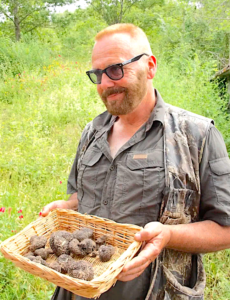 or those interested in a full gastronomic immersion in traditions of food and wine of Italy, this week-long workshop is ideal! Set in the geographic center of Italy - the region of Umbria, is known as the "green heart" of Italy. Here in a small medieval village set among the verdant hills of the Todi valley, a full immersion in ancient knowledge and traditional flavors will take place. Oenophiles interested in discovering the wines of the region will not be disappointed - surrounded by by world-class vineyards in every direction, there will be plenty of opportunities for discovering the excellent wines of the region!
or those interested in a full gastronomic immersion in traditions of food and wine of Italy, this week-long workshop is ideal! Set in the geographic center of Italy - the region of Umbria, is known as the "green heart" of Italy. Here in a small medieval village set among the verdant hills of the Todi valley, a full immersion in ancient knowledge and traditional flavors will take place. Oenophiles interested in discovering the wines of the region will not be disappointed - surrounded by by world-class vineyards in every direction, there will be plenty of opportunities for discovering the excellent wines of the region!
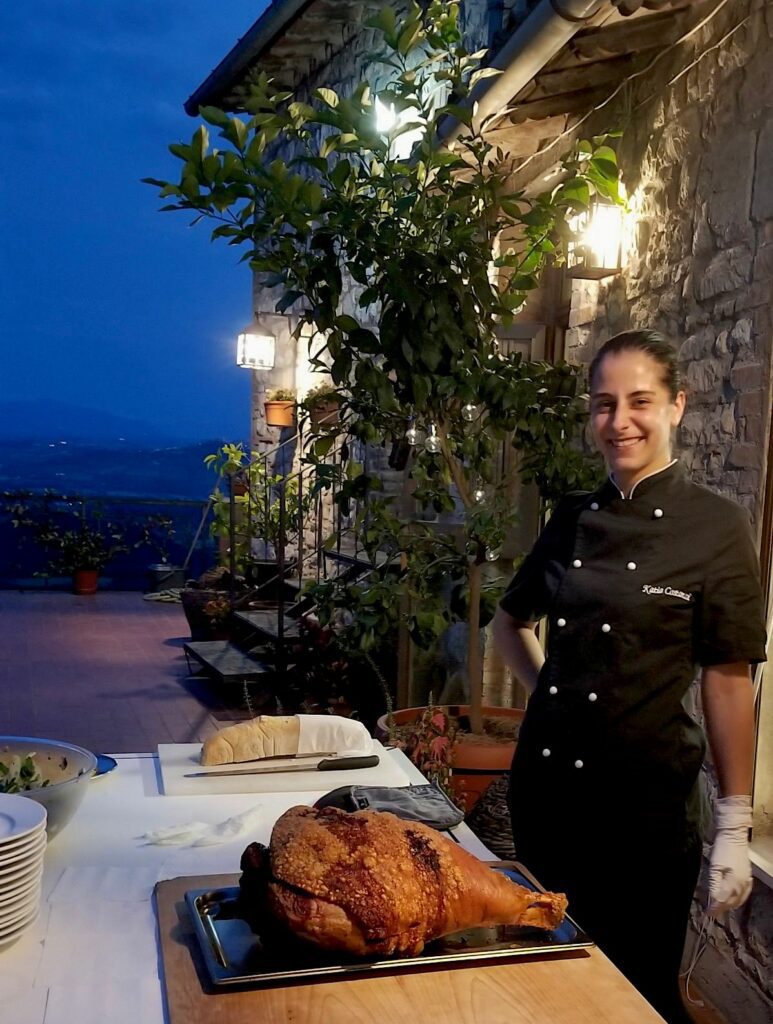
Intended for experts or enthusiasts in the food and wine sector interested in improving their skills, those interested in learning about Italian foodand wine for personal pleasure, or simply for enthusiasts of good living - the pleasures of the Umbrian table provide for an unforgettable experience in Italy.
The duration of the workshop is one week, from 4 to 11 May 2024. (There is also a possibility of personalized dates on request, if an already formed group of 6 - 12 presents itself with different time needs.)
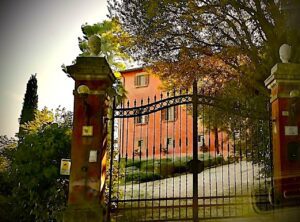
During your stay, you will be housed at a beautiful and grand, 17th c. villa, located on a forested mountain overlooking Tiber valley. Surrounded on all-sides by olive groves, carefully kept lawns and grand cypress trees, hedges of lavender and rosemary grace the landscape, with a vegetable garden for guest use - the setting is idyllic. The stately villa itself is completely gated and fenced and features unique architectural elements, such as beautifully painted beamed and brick domed ceilings, terracotta tiled floors, stone walls, unique fireplaces, arched doorways and wooden-shuttered windows, all complemented by the stylish furnishing and decor throughout. The designer kitchen features the most elegant contemporary appliances and features.The main house sleeps ten (four bedrooms, all en-suite). In addition, a stone cottage and sleeps 4 in 2 bedrooms, with a separate bathrooms, and provides several sitting and relaxation areas in addition to a very comfortable main lounge. A large upper terrace includes a shaded area, perfect for dining and appreciating spectacular sunsets and mountain views. The lower patio surrounds a magnificent infinity pool. The villa is a stunning property that will provide unforgettable experiences and memories that will last a lifetime.
 Daily cooking classes will be held by a local chef in English or Italian (if requested), with years of experience in the food and wine sector. Wine tastings add appreciation will be directed by a 3rd level sommelier, and the farms and woodlands will enrich the palette of event the most knowledgable connoisseurs of cheeses along with - the green gold of Umbria - its wondrously rich and flavorful olive oil for which the region is famous - and 0f course, the black and white truffles of Norcia, which will be used in many of the traditional recipies and preparations, we will explore. Guided by typical recipes of Umbrian cuisine, peasant traditions, and ancient flavors will be enriched by the backdrop castles and ancient village set among the verdant woodlands of the region. The workshop presents a full immersion in the food and wine culture of Italy, which will mark your way of knowing food, tasting it, and experiencing it!
Daily cooking classes will be held by a local chef in English or Italian (if requested), with years of experience in the food and wine sector. Wine tastings add appreciation will be directed by a 3rd level sommelier, and the farms and woodlands will enrich the palette of event the most knowledgable connoisseurs of cheeses along with - the green gold of Umbria - its wondrously rich and flavorful olive oil for which the region is famous - and 0f course, the black and white truffles of Norcia, which will be used in many of the traditional recipies and preparations, we will explore. Guided by typical recipes of Umbrian cuisine, peasant traditions, and ancient flavors will be enriched by the backdrop castles and ancient village set among the verdant woodlands of the region. The workshop presents a full immersion in the food and wine culture of Italy, which will mark your way of knowing food, tasting it, and experiencing it!
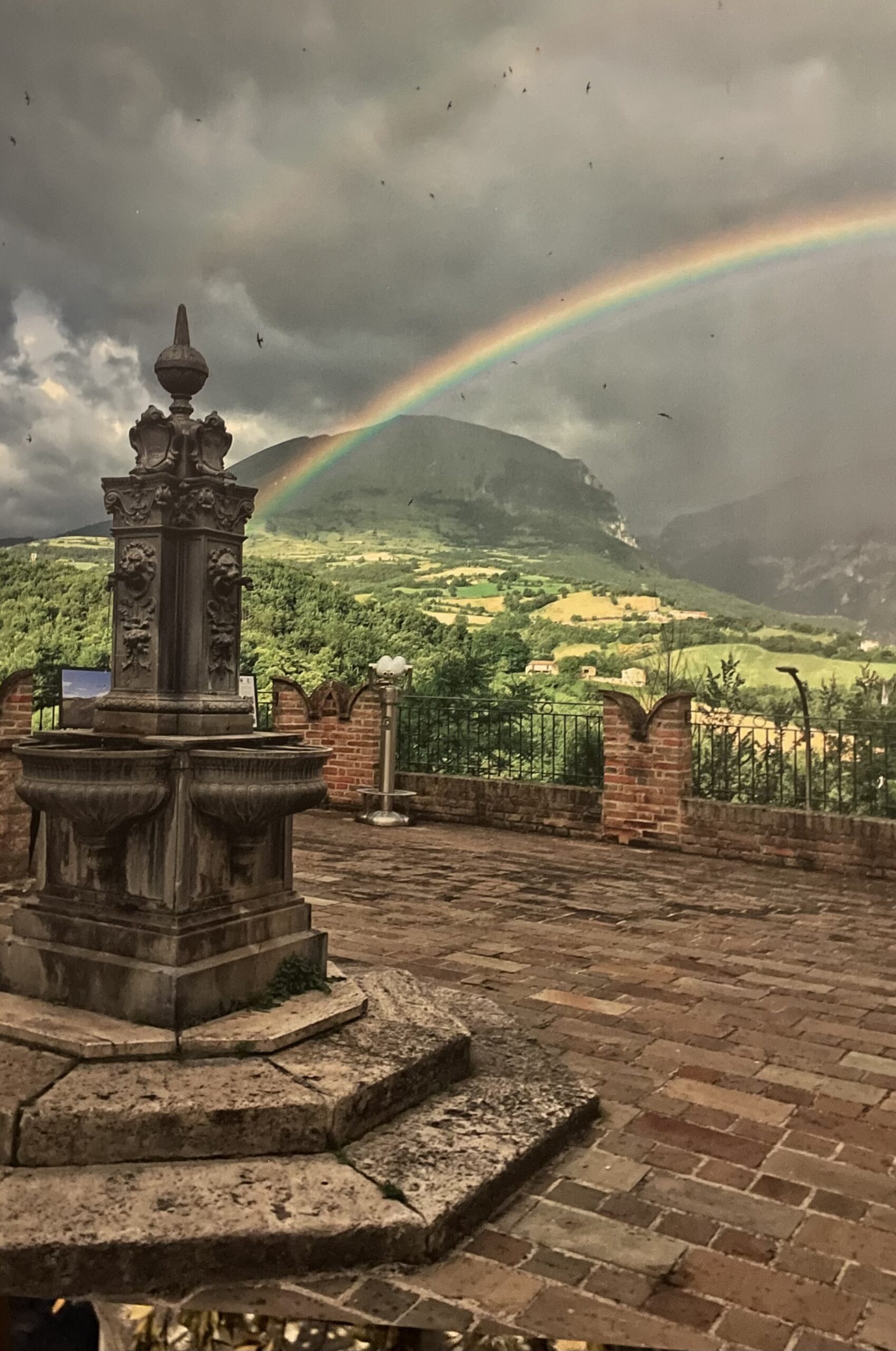 Of Sibyls and Source: Performance in the Landscape is a two-week exploration of live art in geo-mythic sites in Umbria.
Of Sibyls and Source: Performance in the Landscape is a two-week exploration of live art in geo-mythic sites in Umbria.
This residency aims to open space for research,inquiry, and connection through myth making and embodied presence in/with/of the land. We will spend 3 days hiking in the Parco Nacional di Sibilline, part of the Apennines named for the Sibyl, or prophetess of antiquity, who is believed to have lived there in a cave at the top of Monte Sibilla. We will experience sites of ritual and esoteric rites related to the myth of the Sibyl mentioned in literary sources as well as living local folk traditions dating back thousands of years.
Our time together will also include day trips to the Nera river with Roman ruins whose source is the Monti Sibillini and entrance into the remarkable Frassasi cave.
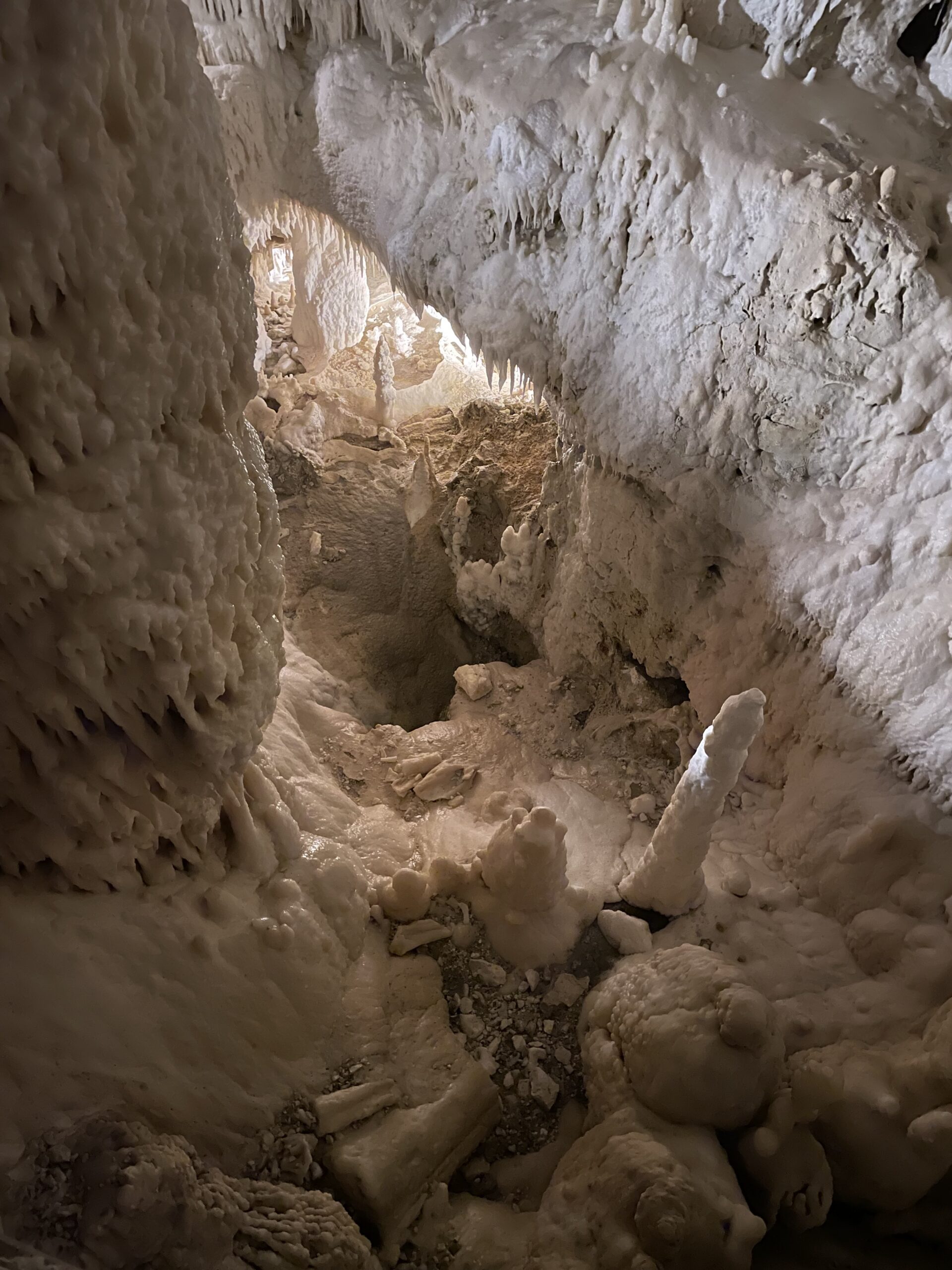
Performances may take place at any or all of these locations including the impeccably maintained medieval town of Monte Castello di Vibio, our home base. At the conclusion of the residency we will hold a screening and live performance event in Monte Castello di Vibio.
Our group will include a videographer to help document our work.
Please note this residency includes physical complexities: moderate hiking up to an altitude of 7654 ft (2333 m), cold-water wild swimming and a cave visit. Applicants are responsible for their own physical wellbeing.
Please submit project proposals related to Parco Nacional di Sibilline, Nera river and Frassasi cave for consideration.
Participants will be housed in the remarkably well-preserved Umbrian hill town of Monte Castello di Vibio. Your workshop package is all-inclusive, providing welcome and departure services and airport transfer from the Rome Fiumicino, Leonardo Da Vinci Airport (FCO), aboard our comfortable private bus; single occupancy accommodations with shared bath (a wide range of upgrades with private bath are available); 3 meals* per day, when on campus, Monday-Thursday; Prosecco brunch and dinner on Saturday and Sunday (when on campus) No meals are served on Friday - our excursion day - unless previously arranged. Your workshop includes the excursions below, however, many additional options are available for an additional fee. Of course, 24/7 access to facilities and 24/7 bilingual support are provided. *Meal service is provided while in Monte Castello only, unless otherwise noted. Meals on excursions and admissions are not included in the cost, unless specifically noted in the itinerary.
Please note: Due to logistical and locational considerations, a brief Project Proposal (of approximately 300 words) is required for this workshop. Please submit this, as well as a current CV and images of work (or link to a website) via email at: icarts.info@gmail.com Responses will be issued within 48 hours.


Living in the Play: Nido* Residency, brings together an international consortium of artists to Monte Castello di Vibio, Italy, for a two-week artist residency that culminates in an exhibition of artworks and corresponding catalog. *It.: "Nest".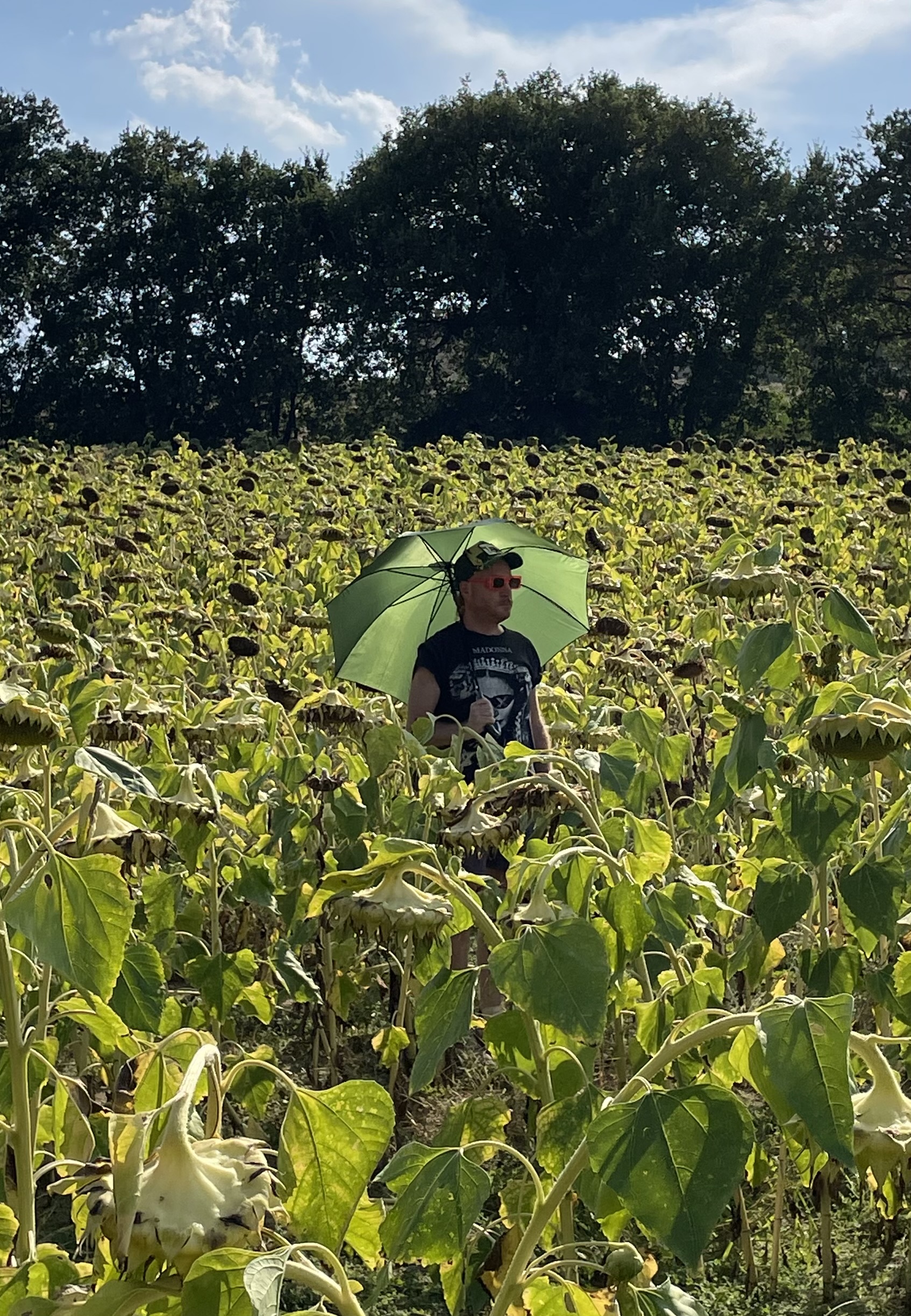
During the residency, your goal individually and collectively is to explore the social historical landscape, use of land resources, and the hidden histories of Monte Castello di Vibio and the surrounding region. This will inform and guide our conversations and contribute to the making practices of each artist amongst Living in the Play: nido.
This residency is in partnership with The Poor Farm Experiment in rural Wisconsin, USA, which has hosted Living In the Play since 2018. We are invested in creating spaces that uplift and connect fellow artists. Our goal is to gather artists through intentional actions that foster community. With a focus on inviting multi-generational and diverse pools of artists, we aim to offer art practitioners ways of engaging their practice with a focused depth of ideas around site, play, and community.
 Participants will be housed in the remarkably well-preserved Umbrian hill town of Monte Castello di Vibio. Your workshop package is all-inclusive, providing welcome and departure services and airport transfer from the Rome Fiumicino, Leonardo Da Vinci Airport (FCO). Aboard our comfortable private bus, single occupancy accommodations with shared bath (a wide range of upgrades with private bath are available), 3 meals per day Monday-Thursday, Prosecco brunch and dinner on Saturday and Sunday (no meals are served on Friday, our excursion day. Your workshop includes one excursion per week and many additional options are available on weekends for an additional fee. Of course, 24/7 access to facilities and 24/7 bi-lingual support are provided. Please consult the Participant Guide for valuable, practical information before travel. (https://icaitaly.com/wp-content/uploads/2022/02/Participant_guide-2019.pdf )
Participants will be housed in the remarkably well-preserved Umbrian hill town of Monte Castello di Vibio. Your workshop package is all-inclusive, providing welcome and departure services and airport transfer from the Rome Fiumicino, Leonardo Da Vinci Airport (FCO). Aboard our comfortable private bus, single occupancy accommodations with shared bath (a wide range of upgrades with private bath are available), 3 meals per day Monday-Thursday, Prosecco brunch and dinner on Saturday and Sunday (no meals are served on Friday, our excursion day. Your workshop includes one excursion per week and many additional options are available on weekends for an additional fee. Of course, 24/7 access to facilities and 24/7 bi-lingual support are provided. Please consult the Participant Guide for valuable, practical information before travel. (https://icaitaly.com/wp-content/uploads/2022/02/Participant_guide-2019.pdf )
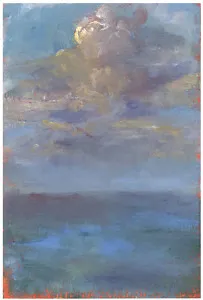 This Fall Immerse yourself in the Umbrian countryside with the bountiful harvest of olives and wine while painting and exploring artistic treasures with Jill. The all-inclusive experience, features: Saturday and Sunday Brunch with Prosecco; painting on Saturday with instruction from Jill, dinner off the grill on the terrace with regional wine Saturday Night, Sunday Morning Art Conversation, Tour of Assisi after Sunday Brunch, Transfer to Fiumicino airport (FCO) after breakfast Monday.
This Fall Immerse yourself in the Umbrian countryside with the bountiful harvest of olives and wine while painting and exploring artistic treasures with Jill. The all-inclusive experience, features: Saturday and Sunday Brunch with Prosecco; painting on Saturday with instruction from Jill, dinner off the grill on the terrace with regional wine Saturday Night, Sunday Morning Art Conversation, Tour of Assisi after Sunday Brunch, Transfer to Fiumicino airport (FCO) after breakfast Monday.
Participants will be housed in the remarkably well-preserved Umbrian hill town of Monte Castello di Vibio. Again, your workshop package is all-inclusive and worry-free, providing departure services and airport transfer to the Rome Fiumicino, Leonardo Da Vinci Airport (FCO). Aboard our comfortable private bus, single occupancy accommodations with shared bath (a wide range of upgrades with private bath are available), lunch and dinner on Friday, Prosecco brunch and grilled dinner on Saturday and Sunday. Your workshop includes one excursion per week and many additional options are available on weekends for an additional fee. Of course, 24/7 access to facilities and 24/7 bi-lingual support are provided.
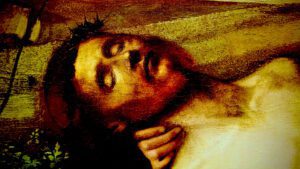 In the 14th c. Sicilian painter, Antonello di Messina brought the new medium of oil painting to Italy. In his travels, he brought the medium to Venice, where artists such as Giovanni Bellini, adopted, and expanded the expressive potential of the medium. Perhaps one of the most influential painting teachers in history, Bellini’s pupils included some of the greatest figures in the history of the medium: Titian, Tintoretto, and Veronese. Their often huge, operatic paintings mark a kind of crowning achievement for the medium, and the processes they developed consequently influenced other great artists and schools of art that included Caravaggio, Rembrandt, Velazquez and countless others who have followed in their path.
In the 14th c. Sicilian painter, Antonello di Messina brought the new medium of oil painting to Italy. In his travels, he brought the medium to Venice, where artists such as Giovanni Bellini, adopted, and expanded the expressive potential of the medium. Perhaps one of the most influential painting teachers in history, Bellini’s pupils included some of the greatest figures in the history of the medium: Titian, Tintoretto, and Veronese. Their often huge, operatic paintings mark a kind of crowning achievement for the medium, and the processes they developed consequently influenced other great artists and schools of art that included Caravaggio, Rembrandt, Velazquez and countless others who have followed in their path.
This workshop will follow the oil painting methods of the great Venetian masters. Working from reproductions, participants will reproduce easel-sized works of the Venetian school of the 16th-18th c. They may also choose to copy a detail from larger Venetian masterworks. To as great an extent possible, students will use the same materials of 15th and 16th c. Venetian artists, many of which will be prepared by hand in class, according to traditional recipes.
Beginning on a uniquely coarse, stretched canvas (approximately 36” x 30”) prepared with rabbit skin glue and white lead, participants will apply a colored ground. This rich, colored surface establishes an overall, atmospheric tonality, that also functions as a very useful neutral color. This then, serves as the basis for the serendipitous approach to color and the remarkable atmospheric effects that are unique to this school of painting.
On this rich surface, participants will transfer perforated drawings with charcoal and a pounce as was done in this time. Afterward, earth colors, carbon black, and white lead ground in oil will be prepared by the class. With these basic colors, an underpainting will be developed using alternating layers of washes and thick impasto areas of white lead. Afterward, rich layers of transparent colors made primarily from pigments produced in in our Pigments and Paint Workshop will be applied. In the process, students will develop an unders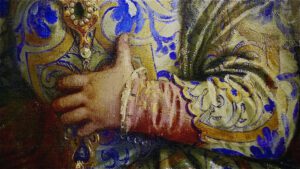 tanding of the important terms, glaze (a dark, thinned color over a lighter surface) and scumble (a thin layer of white lead) as they seek to reproduce the sumptuous color and dramatic brushwork characteristic of the Venetian School.
tanding of the important terms, glaze (a dark, thinned color over a lighter surface) and scumble (a thin layer of white lead) as they seek to reproduce the sumptuous color and dramatic brushwork characteristic of the Venetian School.
During the class participants will have the unique opportunity to see remarkable examples of work by the Venetian masters in person during our excursion to the Pitti Palace in Florence.
Throughout the workshop, participants will be housed in the remarkably well-preserved Umbrian hill town of Monte Castello di Vibio. Your workshop package is all-inclusive, providing welcome and departure services and airport transfer from the Rome Fiumicino, Leonardo Da Vinci Airport (FCO). Aboard our comfortable private bus, single occupancy accommodations with shared bath (a wide range of upgrades with private bath are available), 3 meals per day Monday-Thursday, Prosecco brunch and dinner on Saturday and Sunday (no meals are served on Friday, our excursion day. Your workshop includes an excursion to Florence. Of course, throughout your stay, 24/7 access to facilities and 24/7 bi-lingual support are provided.
Price of the workshop includes all materials needed to produce the painting described above, except brushes, which will be available for sale at ICA in Italy. While it is unlikely that the painting will be completed in the timeframe allowed by the workshop, our goal is to give participants a sufficient understanding of the Venetian process in order to complete the painting at home. As part of the course fee, participants will be issued a unique folding stretcher that allows the painting itself to be folded into a carry-on luggage-sized parcel, even if not fully dry.
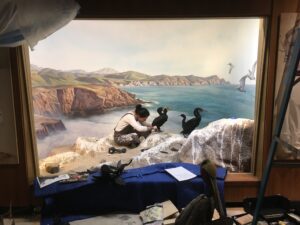 This intensive workshop will be a hands-on immersion into the art and science of taxidermy for conservation and public education. Students will create taxidermy birds and mammals with techniques used in museums, utilizing custom forms and advanced methods for accuracy of any specimen they may work on in the future.
This intensive workshop will be a hands-on immersion into the art and science of taxidermy for conservation and public education. Students will create taxidermy birds and mammals with techniques used in museums, utilizing custom forms and advanced methods for accuracy of any specimen they may work on in the future.
Students will learn to skin animals, prepare skins, read reference materials, create custom forms/armatures, pose animals, assemble specimens, groom and finish the pieces for realism. We will also be teaching advanced techniques such as creating death-masks and molding & casting head forms in order to make both 3D reference and provide an incredibly accurate facial structure.
Our goal is that students leave with both finished work and the ability to practice the craft of taxidermy themselves.
All specimens will be by products from other uses; hunting for food or non-native pest control.
Participants will be housed in the remarkably well-preserved Umbrian hill town of Monte Castello di Vibio. Your workshop package is all-inclusive, providing welcome and departure services and airport transfer from the Rome Fiumicino, Leonardo Da Vinci Airport (FCO). Aboard our comfortable private bus, single occupancy accommodations with shared bath (a wide range of upgrades with private bath are available), 3 meals per day Monday-Thursday, Prosecco brunch and dinner on Saturday and Sunday (no meals are served on Friday, our excursion day. Your workshop includes one excursion per week and many additional options are available on weekends for an additional fee. Of course, 24/7 access to facilities and 24/7 bi-lingual support are provided.
This is a 2 week class covering both birds and mammals.
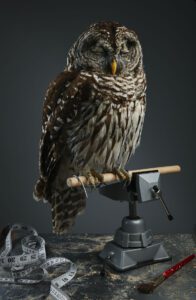
Bird taxidermy is its own unique craft requiring anatomical knowledge, technical skill and an artistic sensibility. In this intensive workshop, we will be teaching students all of these fundamentals utilizing museum techniques. This class is recommended for both beginners and those with taxidermy experience looking to learn Allis Markham’s museum techniques. Birds are also a perfect way to start learning taxidermy because students can go from frozen to finished all in one course. We will be working on Magpies and Crows locally collected as part of abatement / pest control; their deaths are not exclusively for this course. These species also lend themselves well to learning taxidermy and can create beautiful results with a lot of character. In fact, Allis has had the pleasure of creating and displaying both species for the Natural History Museum of Los Angeles.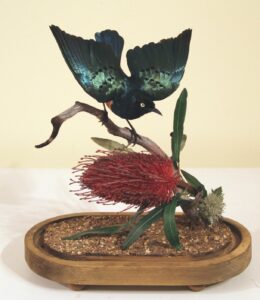
We will begin with a discussion of Avian anatomy, how to obtain legal specimens and general techniques for working on birds. Students will be learning the skills of: skinning, fleshing, wiring, wrapped body creation, mounting, posing and grooming. All supplies, tools and specimens will be provided for your class. After the end of this course, students will be able to take their own Crow or Magpie home on a base. After the course ends, every student will receive a list of documents, including a list of steps, supplies, tools and video resources all to assist in gaining the knowledge to start their own projects at home.
The ICArts team will also assist students with the logistics of getting their final pieces home safely.
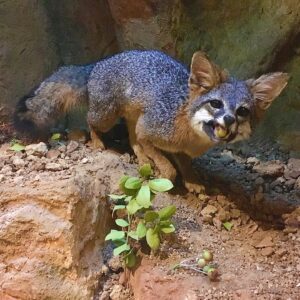 The nature of Mammal taxidermy is far different from that of birds. Students will find this course to be more sculpting-centered with a large attention to muscle detail. This class is recommended for both beginners and those with taxidermy experience looking for a way to learn mammal taxidermy and the art of creating custom-made mammal mounts utilizing museum techniques.
The nature of Mammal taxidermy is far different from that of birds. Students will find this course to be more sculpting-centered with a large attention to muscle detail. This class is recommended for both beginners and those with taxidermy experience looking for a way to learn mammal taxidermy and the art of creating custom-made mammal mounts utilizing museum techniques.
In this class, we will be focusing on the taxidermy of two common North American mammals, the Grey Fox and the Striped Skunk. These were collected in the United States as part of abatement / pest control; their deaths are not exclusively for this course.
While these specimens are native to the US, we have taken great care to make sure our materials are all commonly available in Europe and around the world. For instance, we will be learning the very custom technique of wrapping the bodies of the animals instead of ordering commercial forms which may not be available outside of the US, and are not nearly as accurate as creating a form for your specific specimen. This technique is used often for more exotic museum specimens due to the lack of commercial forms for them and the ability to create a more accurate form when custom-made.
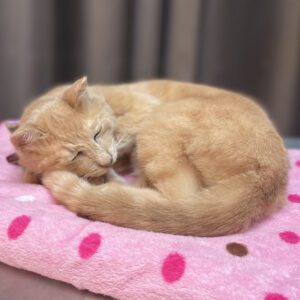
We will begin with a discussion of each animal’s anatomy, how to obtain legal specimens and general techniques for working on mammals. Students will start with tanned specimens (due to the process of tanning which requires weeks) but will be given a tutorial and documents on skinning and tanning.
In class, students will learn the skills of: measuring and wrapping forms, posing the forms for behavior and anatomical accuracy, custom-carving heads, Earliner-creation, skin fitting, creating/setting paws, sewing, facial details, and grooming/finishing work. We will also perform a demonstration on how to mold & cast for the creation death masks in order to create incredibly accurate headforms. All supplies, tools and specimens will be provided for your class. By the end of the class, students will take home their own Grey Fox or Skunk on a base. After the course ends, every student will receive a list of documents, including a list of steps, supplies, tools, formula for tanning, and video resources all to assist in gaining the knowledge to start their own projects at home.
The ICArts team will also assist students with the logistics of getting their final pieces home safely.
 This intensive workshop will be a hands-on immersion into the art and science of taxidermy for conservation and public education. Students will create taxidermy Mammals with techniques used in museums, utilizing custom forms and advanced methods for accuracy of any specimen they may work on in the future.
This intensive workshop will be a hands-on immersion into the art and science of taxidermy for conservation and public education. Students will create taxidermy Mammals with techniques used in museums, utilizing custom forms and advanced methods for accuracy of any specimen they may work on in the future.
Students will learn to skin animals, prepare skins, read reference materials, create custom forms/armatures, pose animals, assemble specimens, groom and finish the pieces for realism. We will also be teaching advanced techniques such as creating death-masks and molding & casting head forms in order to make both 3D reference and provide an incredibly accurate facial structure.
Our goal is that students leave with both finished work and the ability to practice the craft of taxidermy themselves.
The nature of Mammal taxidermy is far different from that of birds. Students will find this course to be more sculpting-centered with a large attention to muscle detail. This class is recommended for both beginners and those with taxidermy experience looking for a way to learn mammal taxidermy and the art of creating custom-made mammal mounts utilizing museum techniques.
In this class, we will be focusing on the taxidermy of two common North American mammals, the Grey Fox and the Striped Skunk. These were collected in the United States as part of abatement / pest control; their deaths are not exclusively for this course. While these specimens are native to the US, we have taken great care to make sure our materials are all commonly available in Europe and around the world. For instance, we will be learning the very custom technique of wrapping the bodies of the animals instead of ordering commercial forms which may not be available outside of the US, and are not nearly as accurate as creating a form for your specifi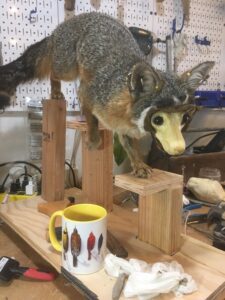 c specimen. This technique is used often for more exotic museum specimens due to the lack of commercial forms for them and the ability to create a more accurate form when custom-made.
c specimen. This technique is used often for more exotic museum specimens due to the lack of commercial forms for them and the ability to create a more accurate form when custom-made.
We will begin with a discussion of each animal’s anatomy, how to obtain legal specimens and general techniques for working on mammals. Students will start with tanned specimens (due to the process of tanning which requires weeks) but will be given a tutorial and documents on skinning and tanning.
In class, students will learn the skills of: measuring and wrapping forms, posing the forms for behavior and anatomical accuracy, custom-carving heads, Earliner-creation, skin fitting, creating/setting paws, sewing, facial details, and grooming/finishing work. We will also perform a demonstration on how to mold & cast for the creation death masks in order to create incredibly accurate headforms. All supplies, tools and specimens will be provided for your class. By the end of the class, students will take home their own Grey Fox or Skunk on a base. After the course ends, every student will receive a list of documents, including a list of steps, supplies, tools, formula for tanning, and video resources all to assist in gaining the knowledge to start their own projects at home.
The ICArts team will also assist students with the logistics of getting their final pieces home safely.
 This intensive workshop will be a hands-on immersion into the art and science of taxidermy for conservation and public education. Students will create taxidermy birds with techniques used in museums, utilizing custom forms and advanced methods for accuracy of any specimen they may work on in the future.
This intensive workshop will be a hands-on immersion into the art and science of taxidermy for conservation and public education. Students will create taxidermy birds with techniques used in museums, utilizing custom forms and advanced methods for accuracy of any specimen they may work on in the future.
Students will learn to skin animals, prepare skins, read reference materials, create custom forms/armatures, pose animals, assemble specimens, groom and finish the pieces for realism. We will also be teaching advanced techniques such as creating death-masks and molding & casting head forms in order to make both 3D reference and provide an incredibly accurate facial structure.
Our goal is that students leave with both finished work and the ability to practice the craft of taxidermy themselves.
Bird taxidermy is its own unique craft requiring anatomical knowledge, technical skill and an artistic sensibility. In this intensive workshop, we will be teaching students all of these fundamentals utilizing museum techniques. This class is recommended for both beginners and those with taxidermy experience looking to learn Allis Markham’s museum techniques. Birds are also a perfect way to start learning taxidermy because students can go from frozen to finished all in one course. We will be working on Magpies and Crows locally collected as part of abatement / pest control; their deaths are not exclusively for this course. These species also lend themselves well to learning taxidermy and can create beautiful results with a lot of character. In fact, Allis has had the pleasure of creating and displaying both species for the Natural History Museum of Los Angeles.
We will begin with a discussion of Avian anatomy, how to obtain legal specimens and general techniques for working on birds. Students will be learning the skills of: skinning, fleshing, wiring, wrapped body creation, mounting, posing and grooming. All supplies, tools and specimens will be provided for your class. After the end of this course, students will be able to take their own Crow or Magpie home on a base. After the course ends, every student will receive a list of documents, including a list of steps, supplies, tools and video resources all to assist in gaining the knowledge to start their own projects at home.
The ICArts team will also assist students with the logistics of getting their final pieces home safely.
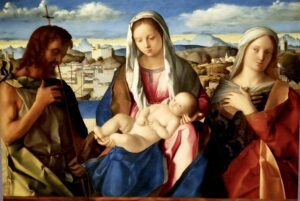 Oil painting developed in Northern Europe early in the 15th c. and Italian painters of the next generation quickly adopted the medium to their own unique vocabulary. Antonello di Messina is generally credited with the introduction of oil painting to Italy and more specifically, to Venice. Artists such as Giovanni Bellini, as well as Leonardo further expanded the expressive potential of the medium. The processes that these artists developed consequently influenced the whole history of Western Art.
Oil painting developed in Northern Europe early in the 15th c. and Italian painters of the next generation quickly adopted the medium to their own unique vocabulary. Antonello di Messina is generally credited with the introduction of oil painting to Italy and more specifically, to Venice. Artists such as Giovanni Bellini, as well as Leonardo further expanded the expressive potential of the medium. The processes that these artists developed consequently influenced the whole history of Western Art.
This workshop will follow their methods. Working from reproductions participants will use materials of the time, prepared by hand in a traditional way. Beginning on a wooden panel, prepared with rabbit skin glue and chalk gesso, participants will transfer their perforated drawings with charcoal and a pounce, then develop a wash drawing with genuine sepia ink, followed by an imprimatura – a colored “veil” - that establishes a tonality and a very useful neutral color. From here, oil paint ground in class will be used to develop the underpainting. Afterwards, rich glazes of transparent colors made primarily from pigments produced in in our Pigments and Paint Workshop.
Throughout the workshop, participants will be housed in the remarkably well-preserved Umbrian hill town of Monte Castello di Vibio. Your workshop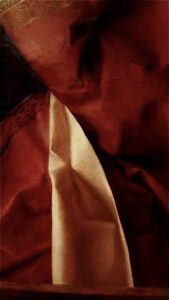
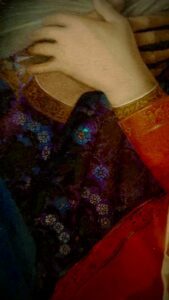
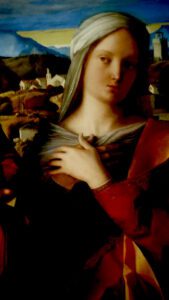 package is all-inclusive, providing welcome and departure services and airport transfer from the Rome Fiumicino,Leonardo Da Vinci Airport (FCO). Aboard our comfortable private bus, single occupancy accommodations with shared bath (a wide range of upgrades with private bath are available), 3 meals per day Monday-Thursday, Prosecco brunch and dinner on Saturday and Sunday (no meals are served on Friday, our excursion day. Your workshop includes an excursion to Perugia. Of course, throughout your stay, 24/7 access to facilities and 24/7 bi-lingual support are provided.
package is all-inclusive, providing welcome and departure services and airport transfer from the Rome Fiumicino,Leonardo Da Vinci Airport (FCO). Aboard our comfortable private bus, single occupancy accommodations with shared bath (a wide range of upgrades with private bath are available), 3 meals per day Monday-Thursday, Prosecco brunch and dinner on Saturday and Sunday (no meals are served on Friday, our excursion day. Your workshop includes an excursion to Perugia. Of course, throughout your stay, 24/7 access to facilities and 24/7 bi-lingual support are provided.
Price of the workshop includes all materials needed to produce the painting described above, except brushes, which will be available for sale at ICA in Italy. While it is unlikely that the painting will be completed in the timeframe allowed by the workshop, our goal is to give participants a sufficient understanding of the Northern Renaissance process in order to complete the painting at home. As part of the course fee, participants will be issued a unique case for the painting that allows the painting itself to be folded into a carry-on luggage-sized parcel even if not fully dry.